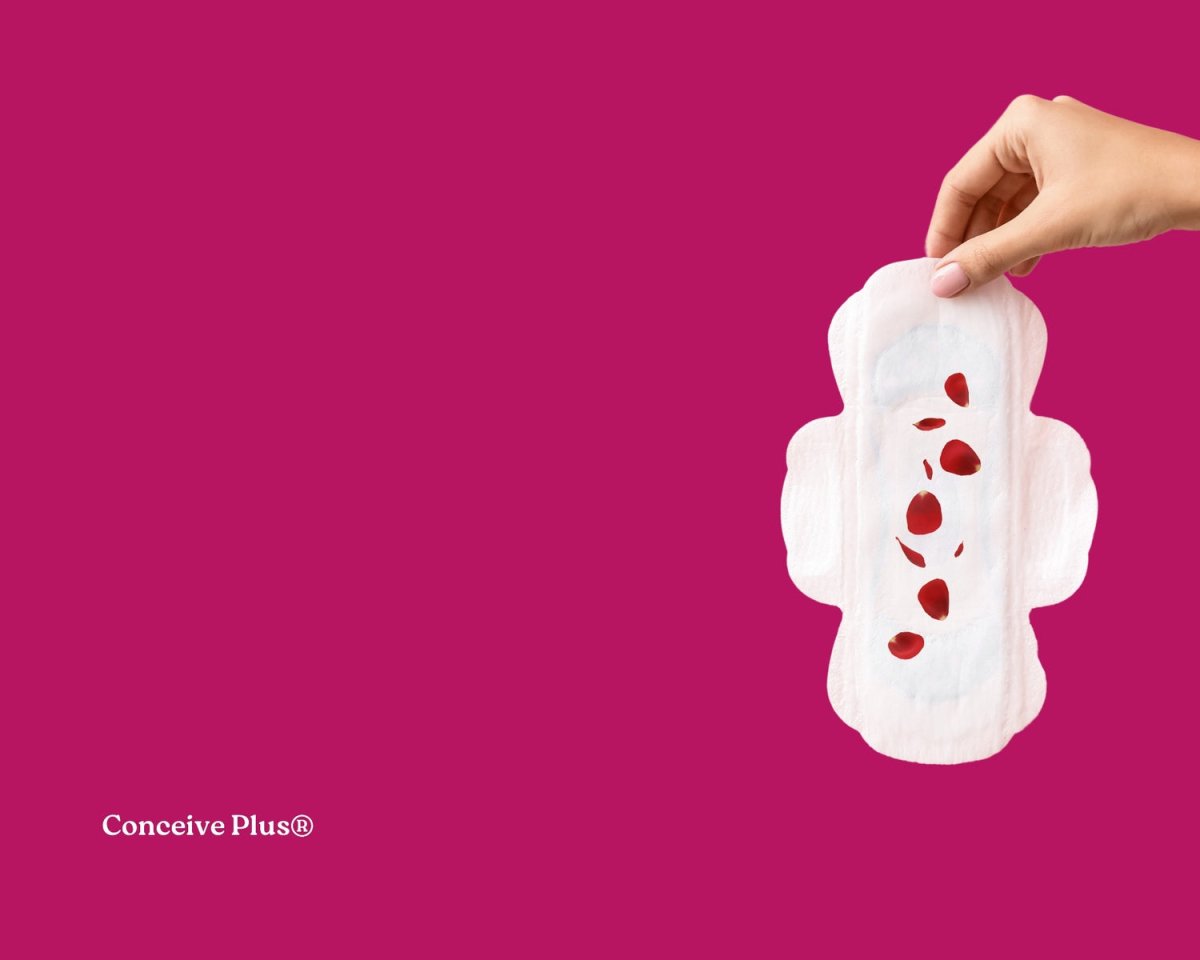Images of Implantation Blood: Differentiating It From Period

Implantation bleeding is a small amount of blood, sometimes just a few drops, that comes out from the vagina at the start of pregnancy [1]. These blood spots indicate that a woman has achieved pregnancy.
The reason behind this bleeding is the implantation of a fertilized egg into the lining of the uterus [2]. Many women mistake it for period blood, the reason being both usually have the same timeline. However, there are some prominent differences between these two blood discharges.
In this article, we will explore the different aspects of implantation bleeding, including how implantation bleeding looks like in images and how to tell the difference between period blood and implantation bleeding.
What Does Implantation Blood Indicate?
The implantation blood is a hint that the egg has been fertilized and has already reached the uterus. This implantation bleeding typically appears around 10 to 14 days after ovulation [3]. The time is usually the same when you might expect period blood.
An important thing to note here is that not every woman will experience this sign of pregnancy. According to the reports, only 1 out of 4 women achieving pregnancy experience implantation bleeding [4].
The presence of implantation blood doesn't confirm that a woman is pregnant, but it can indicate the need for a pregnancy test. You must look for other early pregnancy symptoms, like nausea or breast changes during pregnancy [5].
If such symptoms appear, it is the right time to get the pregnancy test done.
Images of Implantation Blood
Photos of implantation bleeding color are usually pink or brown, unlike the bright red of period blood. It often starts as light spotting and doesn't get heavier. Many women report that it appears only when they wipe after using the toilet.
The appearance of implantation blood can vary from woman to woman, but the characteristics as mentioned earlier are common in this discharge.

Difference Between Implantation Blood and Period Blood
Implantation bleeding occurs at the same time as when a woman expects her menstrual cycle. This makes it confusing to differentiate between both. However, implantation blood has certain characteristics that make it differentiable.
Apparently, the most common difference between implantation blood and period blood is that the amount of discharged blood. Implantation bleeding has a light flow and is shorter, typically lasting from a few hours to two days. In contrast, a period can last from 3 to 7 days and tends to start light, grow heavier, and then taper off [6].
The color of the blood also varies. Implantation blood is generally pinkish or brown, while period blood is usually bright red, especially on the heavier days. Period blood may also contain clots, while implantation blood will not.
When to Take a Pregnancy Test After Implantation Blood
After noticing implantation blood, any woman will wonder when to take a pregnancy test. Since implantation happens before your missed period, it's best to wait at least a few days after the bleeding stops before testing.
This gives your body enough time to produce the pregnancy hormone (hCG), which is what home pregnancy tests detect.
Try to take the test on the first day of your missed period or later for more accurate results. This is because if you test too early when pregnancy hormones are not raised, you can get a false negative even if you are pregnant.
If you're unsure, waiting a few days or getting a blood test from your doctor can provide more reliable answers.
Conclusion: Knowing Early Pregnancy Signs
Implantation bleeding occurs when the fertilized egg finds its attachment to the uterine wall. This discharge is the sign of early pregnancy and it marks the start of the 9-month pregnancy process.
Yes, it's easy to confuse implantation blood with period spotting, but knowing its characteristics can help you recognize it. The unique characteristics of implantation blood are light pink or brown color, minimal in amount, and short duration.
If you do notice implantation blood, wait for a couple of days before taking a pregnancy test so that you get accurate results.
Resources Used
- Shahid. (2024b, September 29). Implantation Bleeding: What Every Woman Should Know. Conceive Plus®. https://conceiveplus.com/blogs/blog/implantation-bleeding-what-every-woman-should-know
- Kim, M., & Kim, S. (2017). A Review of Mechanisms of Implantation. Development & Reproduction, 21(4), 351-359. https://doi.org/10.12717/DR.2017.21.4.351
- Implantation bleeding: Common in early pregnancy? (2022b, April 19). Mayo Clinic. https://www.mayoclinic.org/healthy-lifestyle/pregnancy-week-by-week/expert-answers/implantation-bleeding/faq-20058257
- Professional, C. C. M. (2024j, August 9). Implantation Bleeding. Cleveland Clinic. https://my.clevelandclinic.org/health/symptoms/24536-implantation-bleeding
- Lutterodt, M. C., Kähler, P., Kragstrup, J., Nicolaisdottir, D. R., Siersma, V., & Ertmann, R. K. (2019). Examining to what extent pregnancy-related physical symptoms worry women in the first trimester of pregnancy: A cross-sectional study in general practice. BJGP Open, 3(4). https://doi.org/10.3399/bjgpopen19X101674
- Maybin, J. A., & Critchley, O. D. (2015). Menstrual physiology: Implications for endometrial pathology and beyond. Human Reproduction Update, 21(6), 748-761. https://doi.org/10.1093/humupd/dmv038













